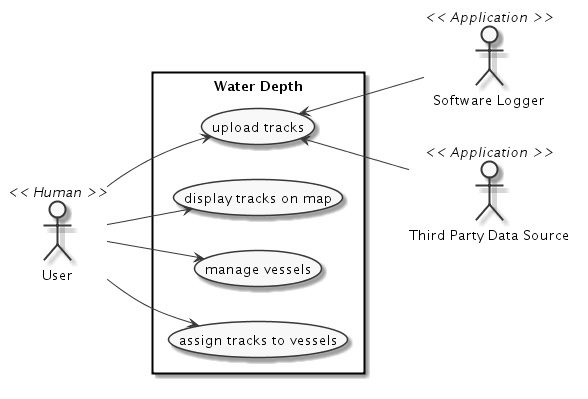OpenSeaMap-dev:Crowd Sourced Depth Data: Unterschied zwischen den Versionen
Markus (Diskussion | Beiträge) (uff - meine Ergänzungen sind nicht gespeichert...) |
Kannix (Diskussion | Beiträge) (category:Depth-DB added) |
||
| (2 dazwischenliegende Versionen von einem anderen Benutzer werden nicht angezeigt) | |||
| Zeile 1: | Zeile 1: | ||
| + | {{Vorlage:dev:Water_depth}} | ||
| + | |||
== Preface == | == Preface == | ||
| Zeile 134: | Zeile 136: | ||
* ... | * ... | ||
| + | |||
| + | [[Kategorie:Depth-DB]] | ||
Aktuelle Version vom 5. Januar 2015, 16:19 Uhr
Inhaltsverzeichnis
Preface
OpenSeaMap plans to display contour lines on the map. Existing data from private companies or authorities mostly is not public domain respectively not compatible with the license of OpenSeaMap/OpenStreetMap. This is why OpenSeaMap tries to get this data with the help of the community. Nevertheless license free data from private companies or authorities is highly welcome.
Target Group
Different potential data contributors were identified.
- Vessel owner
- Charter broker, shipping company
- Charterer
- Government
- Hydrographic institute
Goals
- Collect tracking data
- Improve data quality by adjusting depth (offset echo sounder)
- Improve data quality by adjusting positions (distance between gps antenna and echo sounder)
- Improve data quality by a lot of other meta data about the ship and the measurement eqipment...
- Provide an easy to use web frontend which supports the user to upload and manage his tracks/vessels.
User Stories
The idea is to define necessary user stories, discuss them (on the mailing list) and then create resulting tasks in the tracker (SourceForge).
The use case diagram shown below summarizes the different user stories.
US100 Upload tracks
| US100 Upload tracks |
| As a user I'd like to upload my tracks from one or more vessels via a web frontend. I should be able to upload multiple files at the same time. Because the files can contain a huge amount of data, I need a performant compression, and I'd like to get informed about the upload progress.
As an application (software logger, third party data source) I'd like to automatically upload tracks from different vessels, togehter with my vessels data. Acceptance criteria
Dependencies
|
US101 Manage vessels
| US101 Manage vessels |
| As a user I'd like to manage my vessels via a web frontend. This allows me now (or later on) to assign my tracks to the corresponding vessel, which allows the system to adjust the track data and thereby increase the data quality. To distinguish my vessels I'd like to name them (ID).
Acceptance criteria
Dependencies
|
US102 Assign tracks to vessels
| US102 Assign tracks to vessels |
| As a user I'd like to assign my tracks to the corresponding vessel via a web frontend. This allows the system to adjust the track data and thereby increase the data quality. To distinguish between the tracks I'd like to display a track on the map.
Acceptance criteria
Dependencies
|
US103 Paper document for offline collecting
| US103 Paper document for offline collecting |
| To collect vessels data I'd like to have a paper document which allows me to go on board without an electronic device which has to be online.
Acceptance criteria
Results
|
US104 HowTo for connecting devices
| US104 HowTo for connecting devices |
As a boater/boat owner I would like to contribute to openseamap with depth data, but I don't ave the equipment or don't know how to get the data from it. I would like to see documentation on the equipment necessary and the use of it.
|
Tasks
Links to SourceForge Feature-Requests:
- ...
